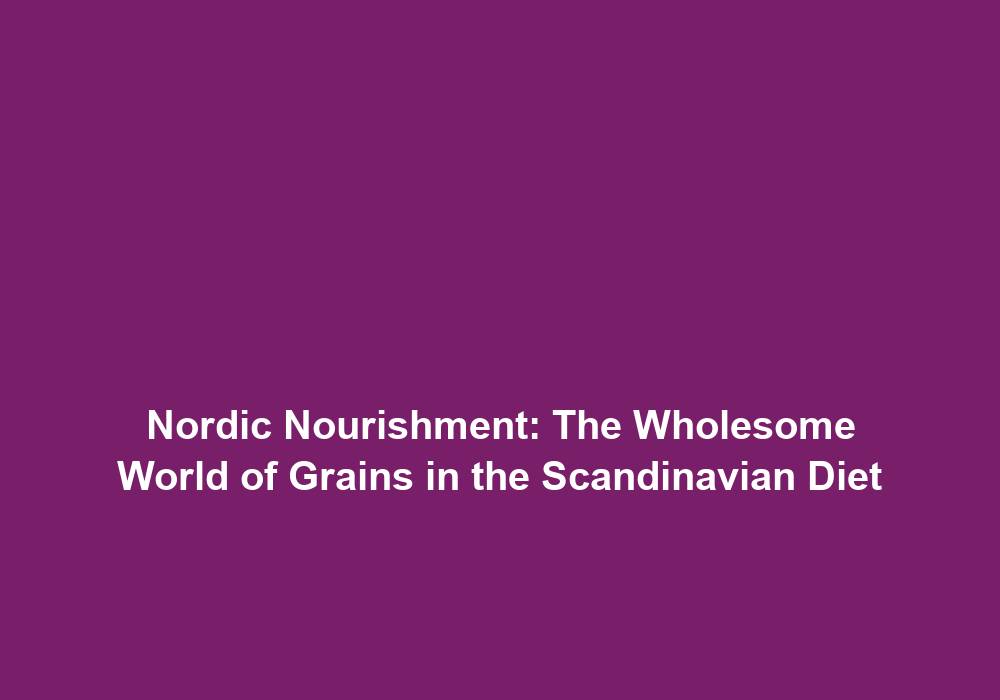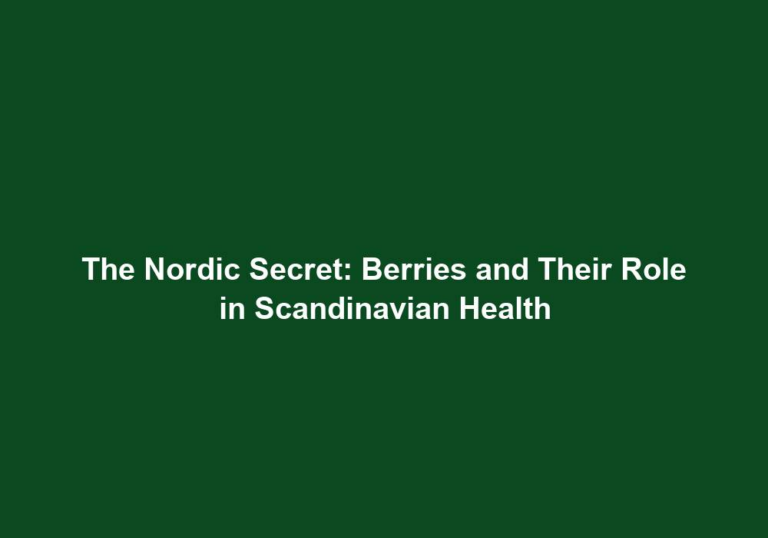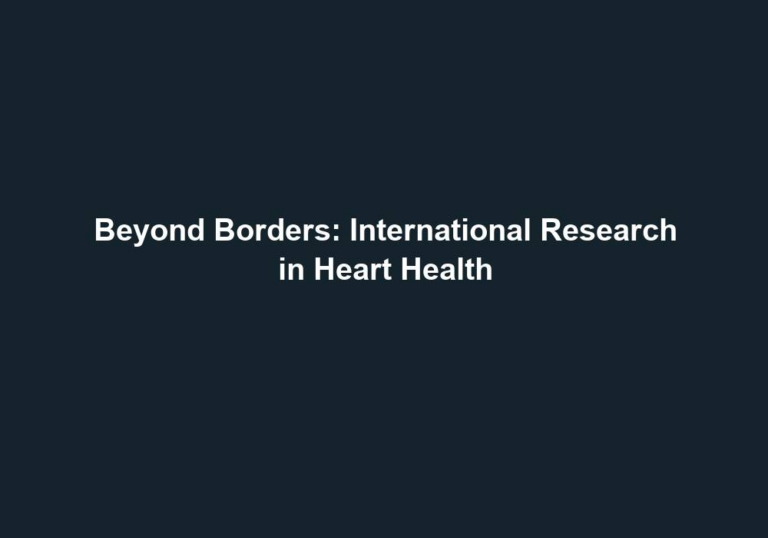Nordic Nourishment: The Wholesome World of Grains in the Scandinavian Diet
The Scandinavian diet, known for its simplicity and focus on fresh and locally sourced ingredients, is gaining popularity worldwide for its health benefits. A key component of this traditional Nordic diet is the abundant use of grains. Grains have been a staple in the Scandinavian diet for centuries, providing essential nutrients and contributing to overall well-being. In this article, we will explore the wholesome world of grains in the Scandinavian diet, their nutritional value, and the various ways they are incorporated into everyday meals.
The Importance of Grains in the Scandinavian Diet
Grains play a crucial role in the Scandinavian diet, providing a significant source of energy and essential nutrients. They are an excellent source of complex carbohydrates, dietary fiber, vitamins, and minerals. The consumption of whole grains is highly encouraged as they retain the bran, germ, and endosperm, offering a higher nutritional value compared to refined grains.
Here are some key reasons why grains are important in the Scandinavian diet:
-
Energy Source: Grains provide a steady release of energy due to their complex carbohydrate content. This is essential for maintaining energy levels throughout the day.
-
Dietary Fiber: Grains, especially whole grains, are rich in dietary fiber. Fiber plays a crucial role in maintaining proper digestion, regulating blood sugar levels, and promoting a healthy heart. It also promotes satiety and aids in weight management.
-
Vitamins and Minerals: Grains contain a range of essential vitamins and minerals that are vital for maintaining good health. Nordic grains are particularly rich in B vitamins, including thiamine, riboflavin, niacin, and folate, which are essential for energy production, the functioning of the nervous system, and the formation of red blood cells. Grains also contain minerals such as iron, magnesium, and zinc, which are important for various bodily functions, including the immune system, bone health, and energy metabolism.
Nutritional Value of Grains in the Scandinavian Diet
1. Fiber-Rich Content
Grains in the Scandinavian diet are known for their high fiber content. Fiber is essential for maintaining proper digestion, regulating blood sugar levels, and promoting a healthy heart. Whole grains such as rye, oats, barley, and wheat are excellent sources of dietary fiber, promoting satiety and aiding in weight management.
Here are some additional benefits of the fiber-rich content in grains:
-
Digestive Health: Fiber adds bulk to the stool, promoting regular bowel movements and preventing constipation. It also helps maintain a healthy gut microbiome, which is important for overall digestive health.
-
Blood Sugar Regulation: Fiber helps slow down the absorption of sugar in the bloodstream, preventing sudden spikes and crashes in blood sugar levels. This is particularly beneficial for individuals with diabetes or those at risk of developing the condition.
-
Heart Health: The high fiber content in grains can help lower cholesterol levels, reducing the risk of heart disease. It also helps maintain healthy blood pressure levels and promotes the health of blood vessels.
2. Rich in Vitamins and Minerals
Grains also provide a range of essential vitamins and minerals that are vital for maintaining good health. Nordic grains are particularly rich in B vitamins, including thiamine, riboflavin, niacin, and folate. These vitamins are essential for energy production, the functioning of the nervous system, and the formation of red blood cells.
Here are some additional benefits of the vitamins and minerals found in grains:
-
Energy Production: B vitamins play a crucial role in converting food into energy. They help the body metabolize carbohydrates, proteins, and fats, ensuring a steady supply of energy throughout the day.
-
Nervous System Function: B vitamins are essential for the proper functioning of the nervous system. They support brain health and help maintain cognitive function.
-
Red Blood Cell Formation: Folate, one of the B vitamins found in grains, is particularly important for the formation of red blood cells. It plays a crucial role in preventing certain types of anemia.
In addition to B vitamins, grains contain minerals such as iron, magnesium, and zinc, which are important for various bodily functions, including the immune system, bone health, and energy metabolism.
3. Antioxidant Properties
Certain grains found in the Scandinavian diet, such as oats and barley, contain antioxidants that can help reduce inflammation and protect against chronic diseases. These antioxidants, including avenanthramides and phenolic acids, have been linked to improved cardiovascular health and a reduced risk of certain cancers.
Here are some additional benefits of the antioxidant properties in grains:
-
Reduced Inflammation: Antioxidants found in grains help reduce inflammation in the body, which is a common underlying factor in many chronic diseases.
-
Cardiovascular Health: The antioxidants in grains have been shown to improve cardiovascular health by reducing cholesterol levels, lowering blood pressure, and improving blood vessel function.
-
Cancer Prevention: Some studies suggest that the antioxidants in grains may have a protective effect against certain types of cancer. They help neutralize harmful free radicals and prevent DNA damage.
Popular Nordic Grains in the Scandinavian Diet
1. Rye
Rye is a staple grain in the Scandinavian diet, known for its robust flavor and dense texture. It is rich in dietary fiber, vitamins, and minerals, making it a highly nutritious choice. Rye bread, often enjoyed with open-faced sandwiches known as smørrebrød, is a famous Scandinavian delicacy.
Here are some additional benefits and uses of rye in the Scandinavian diet:
-
Digestive Health: Rye is particularly beneficial for digestive health due to its high fiber content. It helps promote regular bowel movements and prevents constipation.
-
Blood Sugar Regulation: Rye has a low glycemic index, which means it does not cause a rapid spike in blood sugar levels. This makes it suitable for individuals with diabetes or those looking to manage their blood sugar levels.
-
Versatility: Rye can be enjoyed in various forms, including bread, crackers, and even as a base for pizza crust. Its unique flavor adds a distinct taste to any meal.
2. Oats
Oats are another beloved grain in the Nordic region, often consumed in the form of porridge or muesli. They are an excellent source of soluble fiber, which can help lower cholesterol levels and promote a healthy heart. Oat-based products, such as crispbread and granola, are also popular in Scandinavian cuisine.
Here are some additional benefits and uses of oats in the Scandinavian diet:
-
Heart Health: The soluble fiber in oats, known as beta-glucan, has been shown to lower LDL cholesterol levels and reduce the risk of heart disease. Regular consumption of oats can contribute to a healthy heart.
-
Satiety: Oats are a filling and satisfying grain, thanks to their high fiber content. They can help control appetite and prevent overeating, making them a great choice for weight management.
-
Versatility: Oats can be enjoyed in various forms, such as porridge, overnight oats, granola, and even in baked goods like cookies and muffins. They add a wholesome and nutty flavor to any recipe.
3. Barley
Barley, known for its nutty flavor and chewy texture, is a versatile grain used in a variety of Scandinavian dishes. It is an excellent source of dietary fiber, vitamins, and minerals. Barley soups, stews, and salads are common in Nordic cuisine, providing a wholesome and satisfying meal option.
Here are some additional benefits and uses of barley in the Scandinavian diet:
-
Digestive Health: Barley’s high fiber content promotes regular bowel movements and helps maintain a healthy gut. It can aid in digestion and prevent digestive issues such as constipation.
-
Satiety: Like other whole grains, barley helps promote feelings of fullness and satiety. It can help control appetite and prevent overeating.
-
Versatility: Barley can be used in various dishes, including soups, stews, salads, and even risottos. Its chewy texture adds a delightful element to meals.
4. Wheat
While wheat is not exclusive to the Scandinavian diet, it is still widely consumed in various forms. Whole wheat bread, pasta, and grains are commonly used in Scandinavian households. However, it is important to note that the focus is primarily on whole grain options rather than refined versions.
Here are some additional considerations when incorporating wheat into the Scandinavian diet:
-
Whole Grain Options: When choosing wheat products, opt for whole wheat options instead of refined versions. Whole wheat retains the bran and germ, providing higher nutritional value and fiber content.
-
Bread and Pasta: Whole wheat bread and pasta can be enjoyed as part of a balanced diet. Look for products that list whole wheat as the first ingredient to ensure you are getting the most nutritional benefits.
-
Diverse Uses: Wheat can be used in a variety of dishes, from bread and pasta to grain bowls and salads. It adds a familiar and comforting element to meals.
Incorporating Grains into the Scandinavian Diet
The Scandinavian diet incorporates grains into various meals throughout the day. Here are some traditional ways grains are enjoyed in Nordic cuisine:
1. Breakfast
Porridge made from oats or barley is a popular choice for breakfast in Scandinavia. It is often topped with berries, nuts, or seeds for added flavor and nutrition. Rye bread, often enjoyed with smoked salmon or cheese, is another common option.
Here are some additional breakfast ideas incorporating grains:
-
Muesli: A mix of oats, nuts, seeds, and dried fruits served with yogurt or milk. It can be customized with various toppings to suit individual preferences.
-
Whole Grain Pancakes: Pancakes made with whole grain flour, such as rye or oats, for added fiber and nutrients. They can be served with fresh fruits and a drizzle of honey for a delicious start to the day.
-
Breakfast Breads: Apart from rye bread, other whole grain bread options like oat bread or whole wheat bread can be enjoyed with spreads like nut butter or avocado.
2. Lunch
Open-faced sandwiches, known as smørrebrød, are a traditional lunch option in Scandinavia. Rye bread is typically used as the base, topped with a variety of ingredients such as herring, shrimp, or roast beef. These sandwiches offer a balanced combination of grains, protein, and vegetables.
Here are some additional lunch ideas incorporating grains:
-
Grain Salads: Salads made with grains like barley or quinoa, mixed with fresh vegetables, herbs, and a flavorful dressing. They can be topped with grilled chicken or fish for added protein.
-
Wraps and Roll-ups: Whole grain tortillas or wraps filled with a variety of ingredients like lean meats, vegetables, and hummus. They make for a convenient and nutritious lunch option.
-
Grain Bowls: A combination of cooked grains, roasted vegetables, lean proteins, and a flavorful sauce. Grain bowls are a versatile and customizable lunch option, allowing for a variety of flavors and textures.
3. Dinner
Scandinavian dinners often feature hearty and comforting dishes that incorporate grains. Barley soups, rye-based casseroles, and whole grain pasta dishes are common choices. These meals provide a wholesome balance of nutrients, satisfying both the taste buds and nutritional needs.
Here are some additional dinner ideas incorporating grains:
-
Rye Casseroles: Casseroles made with rye bread as a base, layered with ingredients like vegetables, cheese, and lean meats. They are baked until golden and bubbling, creating a satisfying and flavorful dinner option.
-
Barley Risotto: A twist on the classic Italian dish, barley risotto is made with cooked barley instead of rice. It can be flavored with herbs, vegetables, and a sprinkle of Parmesan cheese for a comforting and nutritious dinner.
-
Whole Grain Pasta: Whole wheat or spelt pasta can be used in various pasta dishes, such as spaghetti with meatballs or pasta primavera. The addition of whole grain pasta adds fiber and nutrients to the meal.
4. Snacks and Desserts
Grains are also utilized in snacks and desserts in the Scandinavian diet. Crispbread, made from rye or barley, is a popular choice for a quick and nutritious snack. Traditional desserts such as oatmeal cookies and barley pudding showcase the versatility of grains in creating delightful treats.
Here are some additional snack and dessert ideas incorporating grains:
-
Crispbread Toppings: Crispbread can be topped with ingredients like avocado, smoked salmon, or hummus for a satisfying and nutritious snack. It can also be enjoyed with a side of cheese or a smear of nut butter.
-
Oatmeal Energy Balls: A mix of oats, nut butter, honey, and other ingredients rolled into bite-sized balls. They make for a convenient and energy-packed snack on the go.
-
Barley Pudding: Barley can be used to create a creamy and satisfying pudding, similar to rice pudding. It can be flavored with vanilla, cinnamon, or even chocolate for a delicious dessert option.
Conclusion
Grains play a vital role in the wholesome and nutritious Scandinavian diet. From rye and







